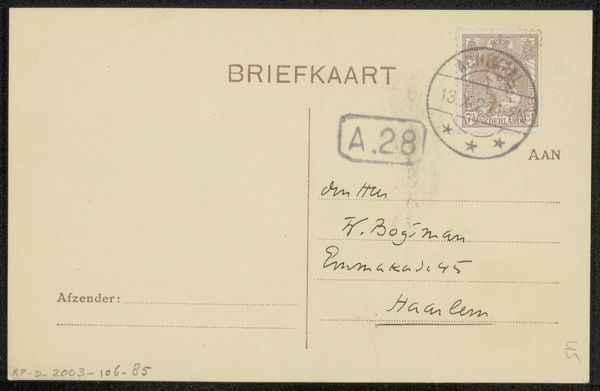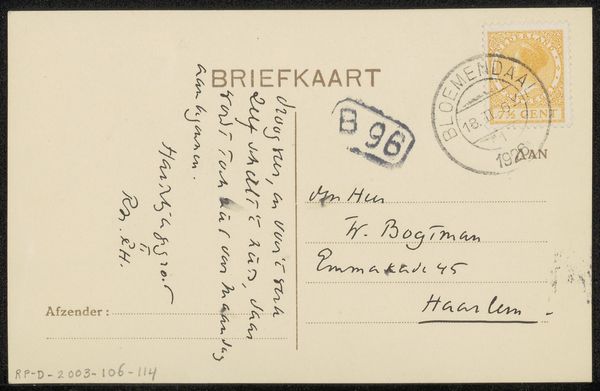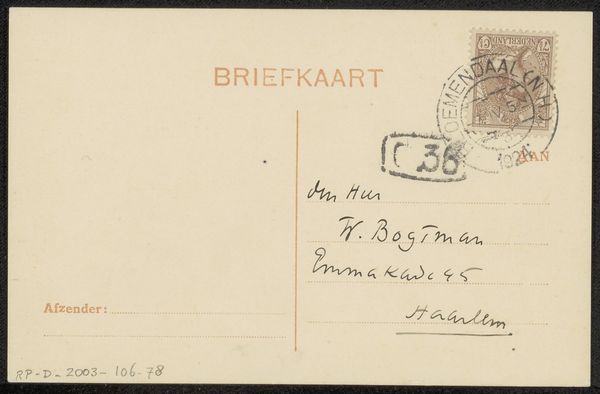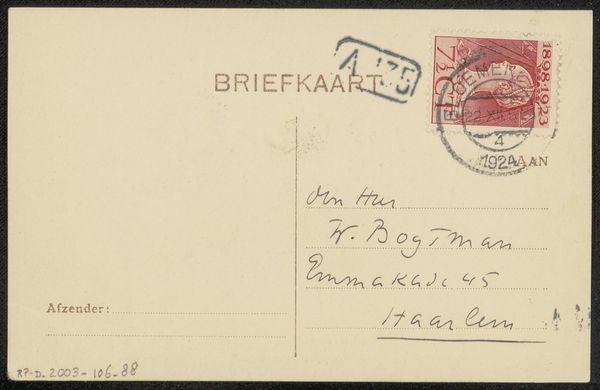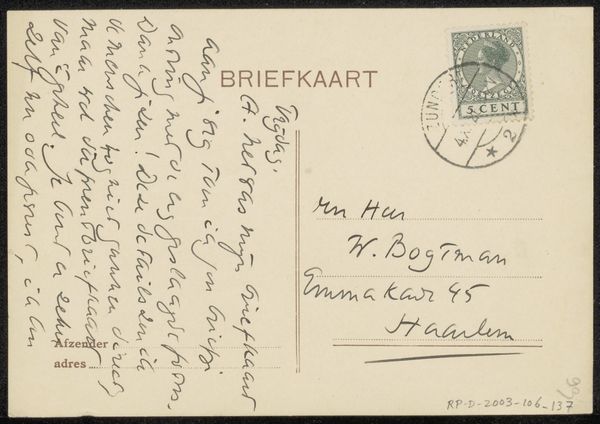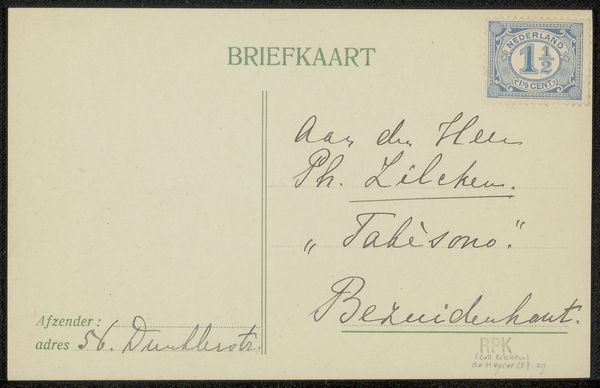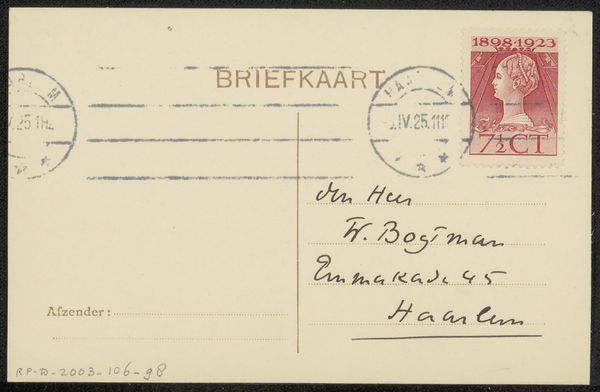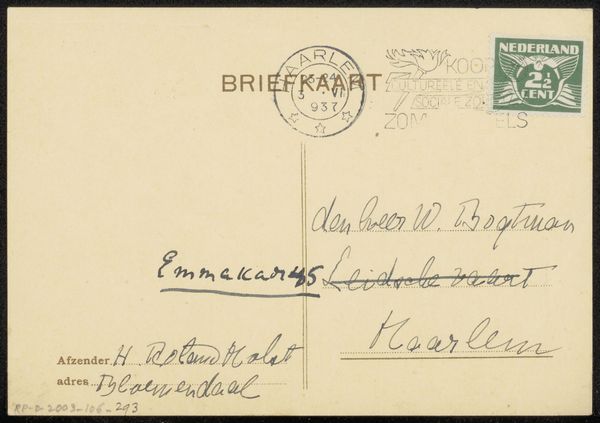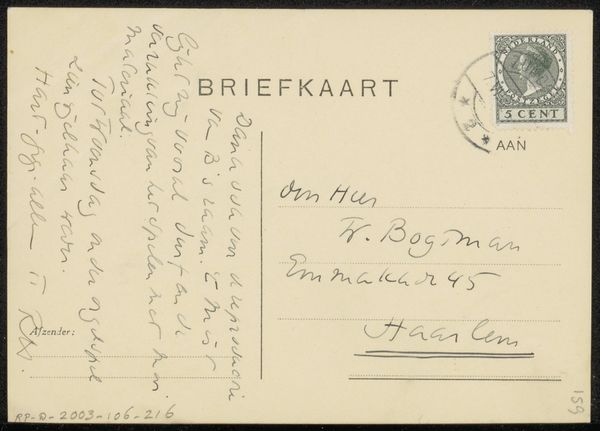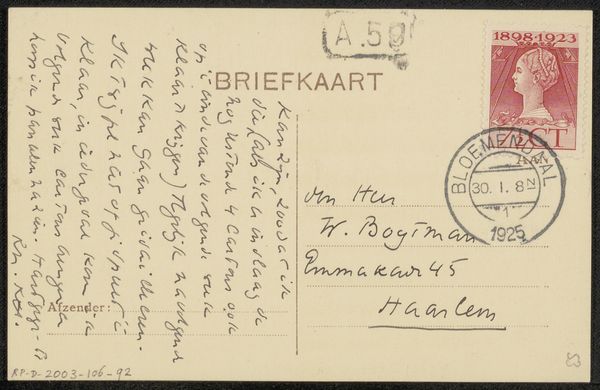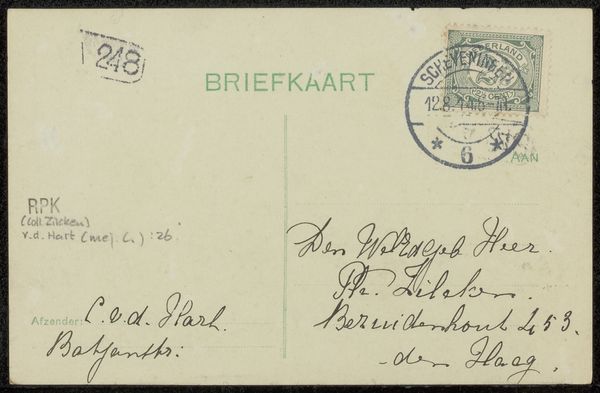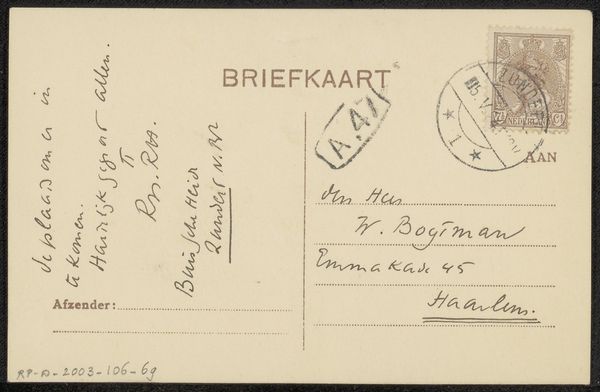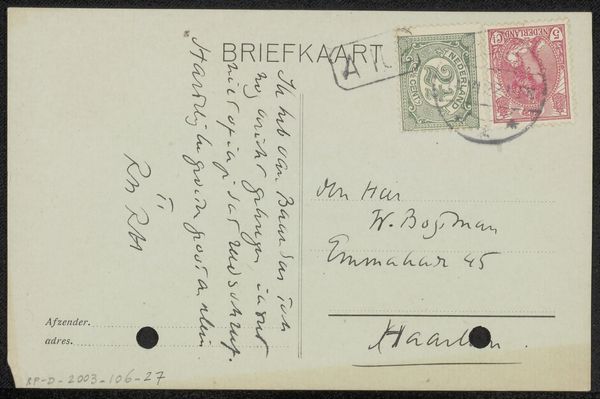
drawing, paper, ink
#
drawing
#
paper
#
ink
Copyright: Rijks Museum: Open Domain
Editor: Here we have Richard Nicolaüs Roland Holst’s "Briefkaart aan Willem Bogtman," likely from the mid-1920s, made with ink on paper. It feels so simple, almost like a found object rather than a deliberate artwork. What do you see in this ordinary little postcard? Curator: It’s deceptively simple, isn’t it? Think about the act of sending a postcard in the 1920s. It wasn’t just a practical means of communication; it was a social gesture, a conscious performance of connection and presence. Roland Holst, sending this to Willem Bogtman, engages in that performance. Consider the potential for queer readings, noting the delicate penmanship. Is there an intersectional exchange happening here between identity, artistic expression, and communication across space? Editor: Queer readings, that's interesting! I hadn’t considered it beyond the surface level. I was so focused on the mundanity. Curator: Mundanity is fertile ground for meaning! A postcard resists the seriousness associated with higher art forms, so it allows for alternative forms of interaction. Roland Holst can explore connections to Bogtman more playfully. This ordinary object invites questions: what kind of relationship did these men have, and how are these power dynamics communicated through seemingly casual gesture of correspondence? Editor: So the actual content of the card becomes almost secondary to the act of sending it, and what it represents about their relationship and social context? Curator: Precisely. This mundane card reflects the network of queer artistic communities during this period. Considering it in a contemporary framework, what aspects feel radically honest in our social media world? Editor: That definitely gives me a fresh perspective! I initially saw it as just a note but can appreciate the multiple meanings within such a humble work. Curator: Exactly! By understanding these seemingly insignificant art artifacts, it allows us to decode and appreciate complex meanings hidden in plain sight.
Comments
No comments
Be the first to comment and join the conversation on the ultimate creative platform.
